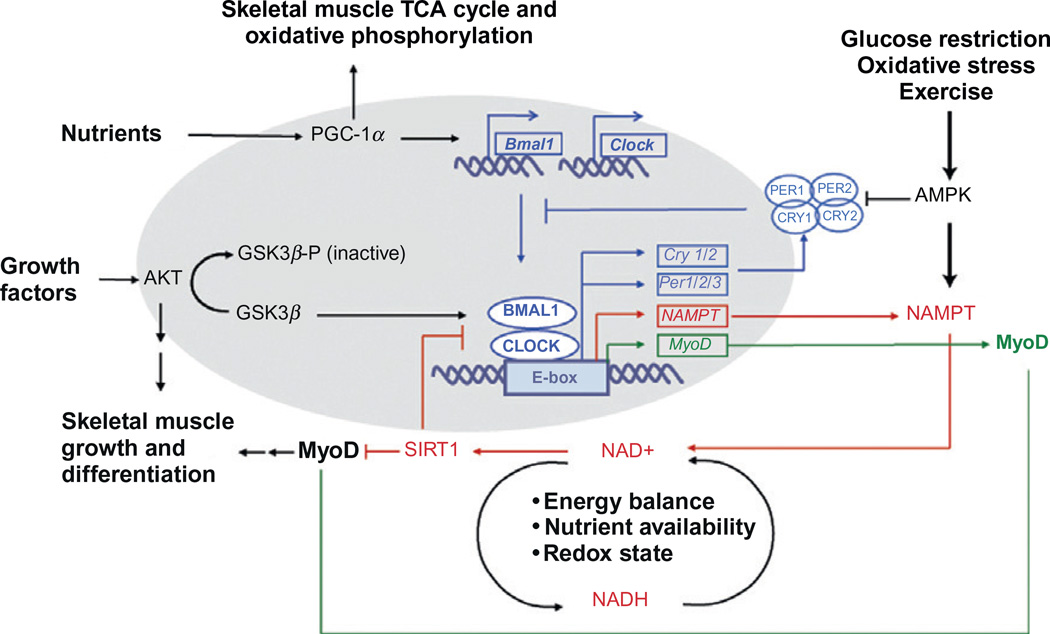Figure 9.5.
Interplay between the circadian clock and metabolism in skeletal muscle. There is a significant overlap between the factors that modulate the molecular clock and the factors critical for metabolism in skeletal muscle. Metabolic sensors, such as AMPK, SirT1, and PGC1α respond to nutrient availability, contractile activity, energy balance, and redox status, and modulate both skeletal muscle metabolism and the molecular clock. In turn, the molecular clock controls the rhythmic expression of these metabolic sensors, suggesting that there is an interdependent link between skeletal muscle metabolism and the molecular clock.

